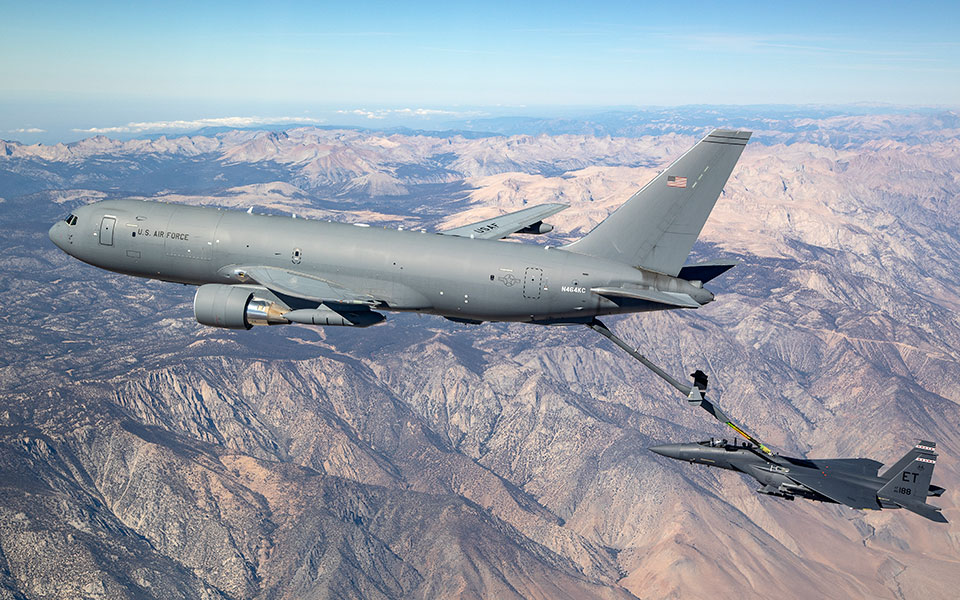The U.S. Air Force is surveying industry to find companies able to develop Night Vision Goggle (NVG) training and support the latter for the KC-46A Pegasus Aircrew Training System (ATS) at Altus AFB, Okla., from Jan. 1 next year through 2026.
A Jan. 19th request for information by Air Force Materiel Command at Wright-Patterson AFB, Ohio said that the objective of AFMC’s market research “is to determine if any contractor has the capability to provide the required Night Vision Goggle (NVG) training course development along with operations and sustainment of the course material” for the KC-46A ATS at Altus.
The Air Force awarded Flight Safety Services Corp. a 13-year fixed-price incentive contract for ATS on May 1, 2013, including $78 million for engineering and manufacturing development. Flight Safety Services Corp. is now part of FSI Defense–a company under Berkshire Hathaway-owned FlightSafety International.

A Boeing KC-46A refuels a U.S. Air Force F-15 midair. Boeing photo
The Air Force uses ATS “as a significant part of an operations and sustainment training program, which provides total training to KC-46 aircrew members on proper operations of the KC-46 aircraft,” AFMC said on Jan. 22. “The goal of the KC-46 ATS program is to provide pilots and boom operators with thorough knowledge and hands-on training, concurrent with the aircraft’s functionality.”
ATS is a mix of classroom instruction, computer-based training, and hands-on training with high-fidelity hardware aircrew training devices (ATDs), including a weapon systems trainer, boom operator trainer, fuselage trainer, pilot part task trainer, and a boom operator part task trainer.
“These ATDs support instructor‐monitored practice training leading to proficiency and certification,” AFMC said. “This acquisition entails services to develop and deliver courseware and training to the government to support aircrew NVG certification training on devices provided under the existing ATS contract.”
Air Mobility Command (AMC) has said that KC-46A night refueling–important for special operations missions–is limited for the tanker, although it is able to perform night refueling with both planes alight (Defense Daily, Oct. 31, 2022). The tanker is unable to do night vision goggle refueling “with complete blackout,” AMC said, given that the KC-46 Long-Wave Infrared (LWIR) cameras on the boom lack the fidelity needed, but the command said that new boom sensor cameras for the aircraft’s Remote Vision System (RVS 2.0) will meet the need.
The tanker’s original RVS had five LWIR “Atom” cameras made by France-based Sofradir–now part of Lynred. RVS 2.0 is to replace the two Sofradir LWIR boom sensor cameras for new boom sensor LWIR cameras by Oregon-based Sierra Olympic Technologies.
The Air Force has said that it foresees fielding RVS 2.0 for the KC-46A in October 2025 at the start of fiscal 2026–a delay of 19 months.
Boeing said that it recently won a $2.3 billion Lot 10 award from the Air Force for 15 KC-46As–a number that brings the total on contract to 153 out of 179 planned.